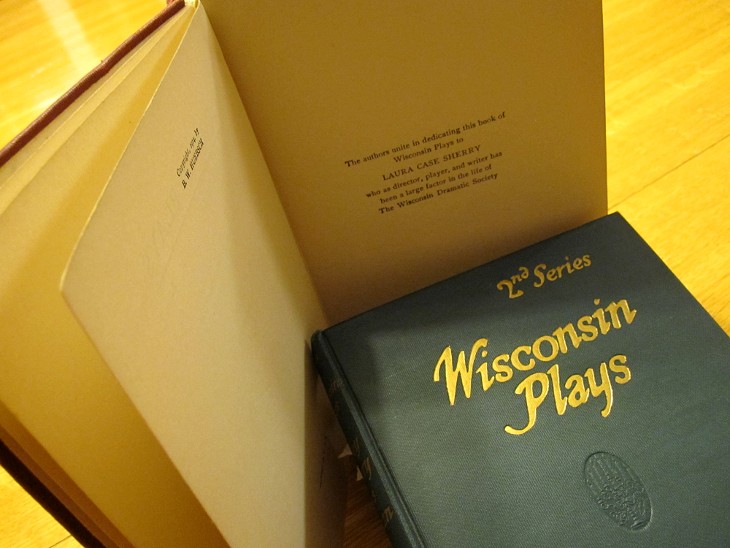Laura Sherry and the Wisconsin Players: Little Theatre in the Badger State
[Note: This article was originally published at Acceity.org on 12 May 2011 and was revised and expanded with new sources on 18 June 2012].

The announcement in the New York Times on October 9, 1917, was straightforward and short: “WISCONSIN PLAYERS COMING.” The amateur acting company from Milwaukee, which had been at the vanguard of the American Little Theatre Movement for the better part of a decade, was about to make its East Coast debut.
In bringing the Wisconsin Players to New York, producer Laura Sherry was doing her small part to turn the world of theatre inside out. Before 1910, New York had practically controlled the American stage. A handful of businessmen had held the nation’s theatres in the grasp of their Theatrical Syndicate, which pushed safely profitable productions from New York across the country while locking out competitors.1 Laura Sherry and the Wisconsin Players represented something different: the Little Theatre, an emerging national movement of non-commercial and non-professional drama. It was now time for the actors and writers of the Midwest to bring their ideas to Manhattan.
Laura Case Sherry, whom the New York Times called “the guiding spirit” of the Wisconsin Players,2 had experienced the theatre from both sides — big and little, commercial and amateur. Born in Prairie du Chien, Wisconsin, in 1876, Laura Case’s parents were Emily Avery and Lawrence Case, owner of the small town’s leading general store. Her parents’ position afforded Laura an education at the University of Wisconsin and the school of speech at Northwestern University. From there she went to study theatre in Chicago and at last New York, where in 1897 she joined the Richard Mansfield Company as an actress and toured the country as a cast member in several plays, including Mansfield’s famous production of Dr Jekyll and Mr Hyde.3 Mansfield, then an opponent of the Theatrical Syndicate, spoke frequently against its stranglehold on the stage, even assailing syndicate bosses inside their own theatres.4 Though Mansfield’s own self-interest later led him to soften his resistance, his early opposition to the centralized commercial theatre must have made an impression on young Laura Case.
At the start of the twentieth century, Case settled back into Wisconsin life. She married Edward P. Sherry, a lumber and paper tycoon from Neenah, and the couple made a home in Milwaukee. There, Mrs. Sherry set to work gathering a club of like-minded theatre devotees and performers.5 The group held meetings and rehearsals in the homes of members, and on April 21, 1909, the amateur troupe staged the one-act Irish drama Riders to the Sea by John Millington Synge at the Davidson Theater in Milwaukee.6 The Irish play was fitting, for the Little Theatre movement in America would draw much of its inspiration from a tour of the United States by the Irish Players in 1911 — but Sherry’s troupe performed Riders to the Sea years before the Irish Players’ visit, demonstrating their foundational role among the nation’s community theaters.7
The nascent Milwaukee association soon gained the support of University of Wisconsin English professor Thomas Dickinson. Unable to produce plays at the university in a time when theatre was not deemed a proper academic subject, Dickinson founded the Wisconsin Dramatic Society in Madison in 1910 and organized a company of players by 1911.8 Dickinson and the Madison group worked closely with Sherry and her Milwaukee compatriots from the start, so that the two associations quickly became branches unified in a statewide society.9 The Wisconsin Players had now been born in earnest.